Sol Looms (Teneriffe/Tenerife)
|
| Outlined: | ||||||
 Ñanduti Frame |
 Ñanduti Frame |
 Mantz |
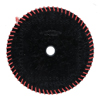 Polka Spider-Web |
 Posi-Bendr |
 Lacis |
|
| Perpendicular Pegged: | ||||||
 Freeform |
 Freeform |
 Sarah Hadley |
||||
 Studio Twelve |
 Ronco |
 Boye |
 Hana-Ami |
 Merit |
 Bizzy |
|
 Briggs |
 Proctor |
 Cushion |
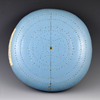 Koppo Cushion |
 Lux Lace Maker |
||
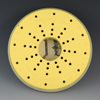 Hazel's |
 Hiawatha |
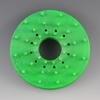 Dexter's |
 Prym |
 Knifty Knitter |
||
| Parallel Pegged: | ||||||
 Le Ténériffe |
 Palma |
 Bucilla |
 Thesa |
|||
 Tablets |
 DMC |
 Sonnen=Spitzen |
||||
 Daisy |
 Knit-Wit |
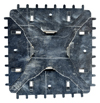 Magic Loom |
|
Free 'Sol' Looms This page presents the technique for making the free 'Sol' type laces in terms of a discussion of the motif looms - I am not concerned with the actual weaving process here. Even though this section is under the 'Teneriffe' heading, I prefer the name 'Sol' to encompass all these examples in one place. Actual examples of lace are presented on my web site under the country of origin. Free 'Sol' encompasses native Teneriffe, Ñanduti, and other Spanish techniques, as well as the more commercial 'teneriffe' methods still promoted today. I do include yarn 'flower loom' techniques. One should be cautious in assuming that any one method is the direct decendent of another - e.g., Teneriffe evolves into yarn flowers. Development of needlework techniques is more driven by material availability, and is often influenced by seemingly unrelated applications. In examining early patents for the 'yarn' flower looms, mention is often found of bow-tying techniques, or artificial flower manufacture, particularly with straw (the term 'daisy winder' did not come about by chance). The development of yarn flower looms seems to be a kind of spike in time rather than a smooth continuous transition. It seems as though it was a sudden adaptation of Sol techniques rather than a smooth progression from needlewoven lace. This is a surprisingly important area of study, since we know so little about the evolution of early bobbin and needlelace. Seeing how something as simple as yarn flower looms evolve at a time when we still have much original documentation, may give us insight into how 16th century lace techniques developed. In this vein I briefly consider further branches in this family such as knitting looms or square weaving frames, but only as they have can also be used as 'flower looms'. I am not covering the drawnwork 'Sol' techniques here - there are other pages on my site where this is discussed. This page is limited to items which stand free from their loom foundation, as does needlelace. Free Sol laces are not classified as needlelaces due to the very sparse use of buttonhole stitch. Instead we call these 'needleweaving' to reflect the extensive use of "plain" weave using a needle as a shuttle through the motif web warp threads. 'Sol' historically implies a circular needlewoven motif based on a 'spiderweb' foundation, however there must be some means of connecting the motifs together. Therefore looms can have irregular shapes still based on the web pattern. Deviations from the converging ray pattern to fill in spaces are really only found in freeform looms (see classification below). This is a growing area of collecting for me, and I do not have actual examples of some of the looms. What I don't have I try to illustrate with advertising or instructional material from my lace library. These will be replaced as I find the actual looms. As always, click on the thumbnails for extensive information on a particular item. It is a fascinating exercise to try and classify the various techniques for making these textiles, and I have organized this page according to my own thoughts on the subject. There are two main functions that a Sol loom must serve - Design and Mechanics. The Design of a motif is set by its geometrical outline and the spacing of the web ray tips. Together these two elements dictate the region of convergence of the rays. (Occasionally the convergence is enforced by a loom element, or forced into a different position by the artist.) Mechanics is concerned with both securing and tensioning the threads, and in Sol looms this is limited to the tips of the Sol web 'rays'. Modern artists might find it productive to think about outline, spacing, convergence, securing, and tensioning in their work. The loom also carries implication for thread size and type, and again this is a productive area of for modern artist exploration. The Design and Mechanics loom functions can be accomplished in a 'Freeform' or a 'Template' mode. 'Freeform' allows the artist to design virtually any motif possible. 'Template' relies on a fixed form which at a minimum provides the Geometry and Spacing function. I designate 3 Template variations: 'Fixed' (where the points of attachment cannot be removed from the loom), 'Removable' (where they can be removed), and 'Dynamic' (where the points remove themselves by some mechanism). The following table presents my thinking on an organization scheme, with an 'x' in the table where I have been able to find actual examples:
According to user preference, one can classify looms with either the rows or the columns as the top level. Let me discuss this using the "loom Type" at the top level (Outlined, Perpendicular Pegged, and Parallel Pegged). I call the vertical colums (Freeform, Fixed Template, Removable Template and Dynamic Ttmplate) the "Mode of use".
A) In 'Outlined' looms, support for the web ray tips is provided by a base thread outlines or couched stitches similar to the couching
"Pegged" looms provide a solid 'pin' as opposed to an outline thread to secure the web. 'Pins' are not limited to traditional sewing pins; they can also include pegs, nails, or projections that provide the design and mechanical functions. first posted 10/3/2009 |